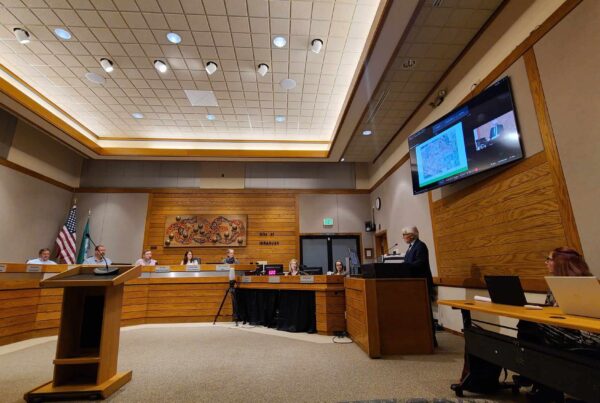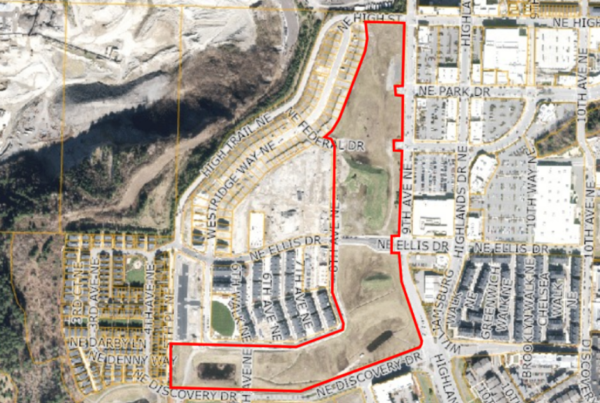
Issaquah City Council voted unanimously 5-0 to approve the ordinance for the High Street Collection Development Agreement with IHIF Commercial LLC, also known as Shelter Holdings, during its regular meeting on Monday, Nov. 20.
Prior to the vote, a total of six speakers gave testimony during a public hearing on Monday, Nov. 13. Some speakers raised concerns that the proposed development would result in too much competition for existing retail establishments in Issaquah Highlands. Others spoke in support of the additional retail opportunities as well as the importance of having high-quality outdoor amenities to serve the community.
“I want you to realize that this development agreement came out of a long litigation situation, which needed to be resolved to remove legal and financial risks to the city,” said Issaquah City Council President Lindsey Walsh. “But as a council, we really worked hard to make sure that what came out of this agreement would benefit the community.”
With its approximately 21.5-acre parcel of land in Issaquah Highlands, Shelter Holdings is planning for 325,000 square feet of commercial and retail uses as well as 1,250 residential units and 40,000 square feet for community recreation.
According to the agenda bill, self-storage facilities are no longer allowed under the agreement. Additionally, one commercial space must be designed to accommodate an entertainment-based tenant such as an arcade, bowling, mini-golf, table tennis, etc.
The agreement says community recreation elements will be used by the entire community, not just the proposed development. Potential amenities may include interactive water features, sports courts, climbing walls, adaptive playground equipment and outdoor fitness equipment. About 20% of the required community amenity space may also be in the form of indoor amenities for year-round use such as health and fitness facilities, club or game rooms, and indoor sports facilities.
Walsh said the city worked to set aside a portion of the housing as either smaller units or senior housing to create a more limited impact to our schools. Under the agreement, at least 200 residential units must offer age-restricted housing for seniors and/or assisted living facilities. Another 20% of the non-age restricted units would be developed as affordable housing based on 80% area median income.
To further reduce the impact on schools, the agreement limits the number of units with three or more bedrooms to 125 units, since those are the most likely to be occupied by families. In addition, residential units will be subject to school impact fees.
“From here, I really look forward to working with the IHCA Architectural Review Committee, who have always done a wonderful job of having the community’s best interests in mind when reviewing potential developments,” Walsh said.
Looking forward, the agreement sets development standards for the property that will allow the project to be built out in phases over a 15-year period. The design for the project, including site layout and other elements of each building, have not yet been determined.
Read more about the history of the development agreement here.





